
The ring R in the arrangement shown can slide along a smooth, fixed, horizontal rod XY. If is attached to the block B by a light sring. The blocks is released from rest, with the string horizontal.
One point in the string will have only vertical motion
R and B will always have momenta of the same magnitude
When the string becomes vertical, the speeds of R and B will be inversely proportional to their masses
R will lose contact with the rod at some point
Step by step video & image solution for The ring R in the arrangement shown can slide along a smooth, fixed, horizontal rod XY. If is attached to the block B by a light sring. The blocks is released from rest, with the string horizontal. by Physics experts to help you in doubts & scoring excellent marks in Class 11 exams.
Updated on:21/07/2023Topper's Solved these Questions
- IMPULSE AND MOMENTUMBOOK - ANURAG MISHRACHAPTER - IMPULSE AND MOMENTUMEXERCISE - L-3,(P-1)
5 Videos
- IMPULSE AND MOMENTUMBOOK - ANURAG MISHRACHAPTER - IMPULSE AND MOMENTUMEXERCISE - P-2
9 Videos
- IMPULSE AND MOMENTUMBOOK - ANURAG MISHRACHAPTER - IMPULSE AND MOMENTUMEXERCISE - Level 1
110 Videos
- FORCE ANALYSISBOOK - ANURAG MISHRACHAPTER - FORCE ANALYSISEXERCISE - Matching type
13 Videos
- RIGID BODY MOTIONBOOK - ANURAG MISHRACHAPTER - RIGID BODY MOTIONEXERCISE - MATCH THE COLUMN
12 Videos
Similar Questions
Knowledge Check
The ring R in the arrangement shown can slide along a smooth, fixed, horizontal rod XY. It is attached to the block B by a light string. The block is released from rest, with the string horizontal
 AOne point in the string will have only vertical motionBR and B will have momenta of the same magnitude.CWhen the string becomes vetical , the speed of R and B Will be directly propertionaly to their massesDR will lose constant with the rod at some point
AOne point in the string will have only vertical motionBR and B will have momenta of the same magnitude.CWhen the string becomes vetical , the speed of R and B Will be directly propertionaly to their massesDR will lose constant with the rod at some pointThe ring R in the arrangement shown can slide along a smooth fixed, horizontal rod XY. It is attached to the block B by a light string. The block is released from rest, with the string horizontal. Then which of the following are true.
 AOne point in the string will have only vertical motionBR and B will always have momentum of same magnitudeCWhen the string becomes vertical, the speeds of R and B will be inversely proportional to their massesDR will lose contact with the rod at some point
AOne point in the string will have only vertical motionBR and B will always have momentum of same magnitudeCWhen the string becomes vertical, the speeds of R and B will be inversely proportional to their massesDR will lose contact with the rod at some pointIn the arrangement shown, the pulleys are smooth and the strings are inextensible. The acceleration of block B is :
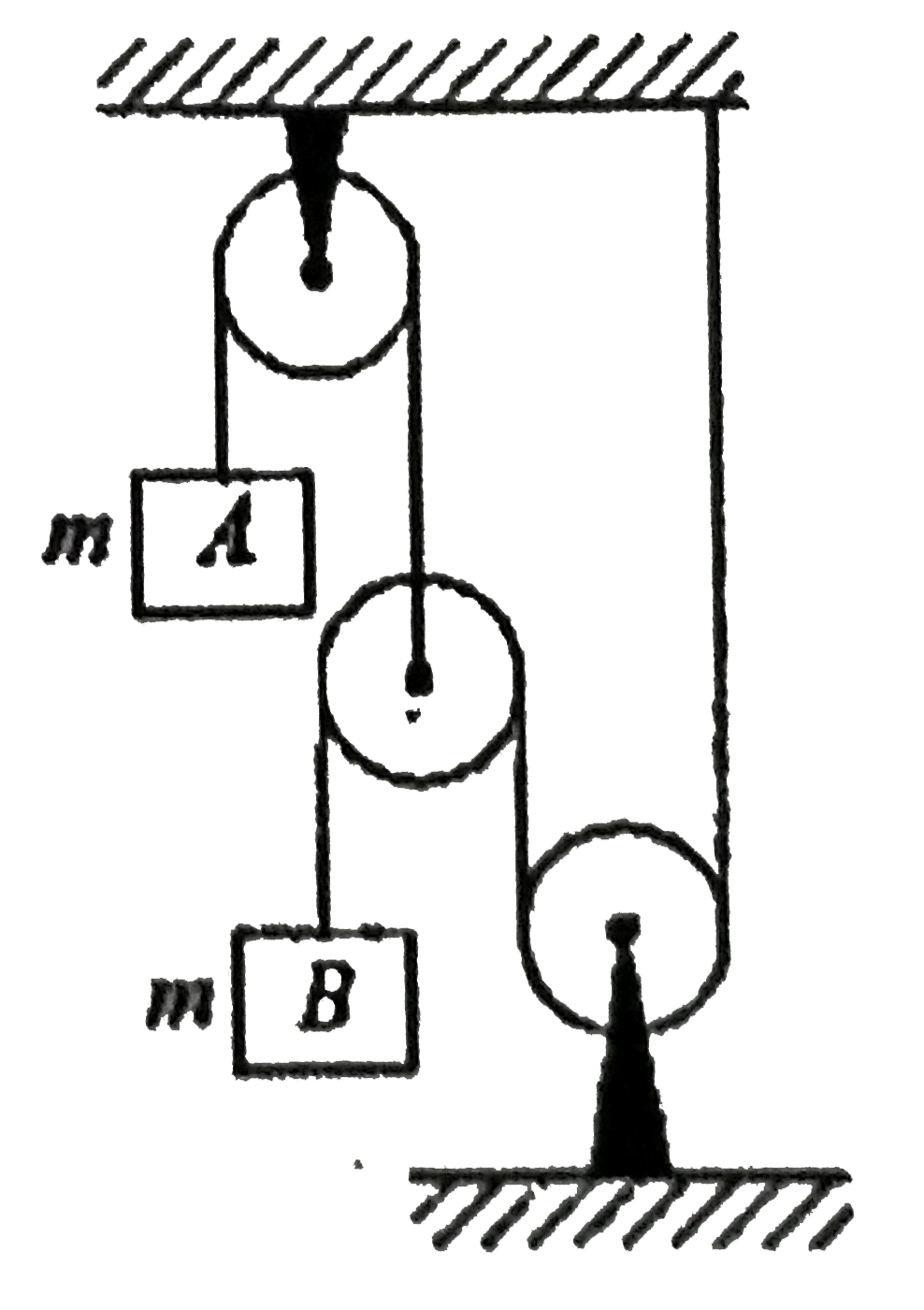 Ag/5B5g/5C2g/5D2g/3
Ag/5B5g/5C2g/5D2g/3
A uniform rod BC with length a is attached to a light string AC. End A of the string is fixed to the ceiling and the end B of the rod is on a smooth horizontal surface. B is exactly below point A and length AB is b(a<b<2a). The system is released from rest and the rod begins to slide. Find the speed of the centre of the rod when the string becomes vertical.
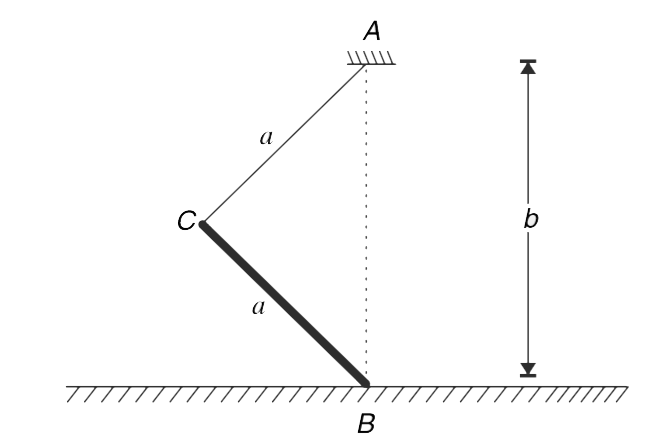
View Solution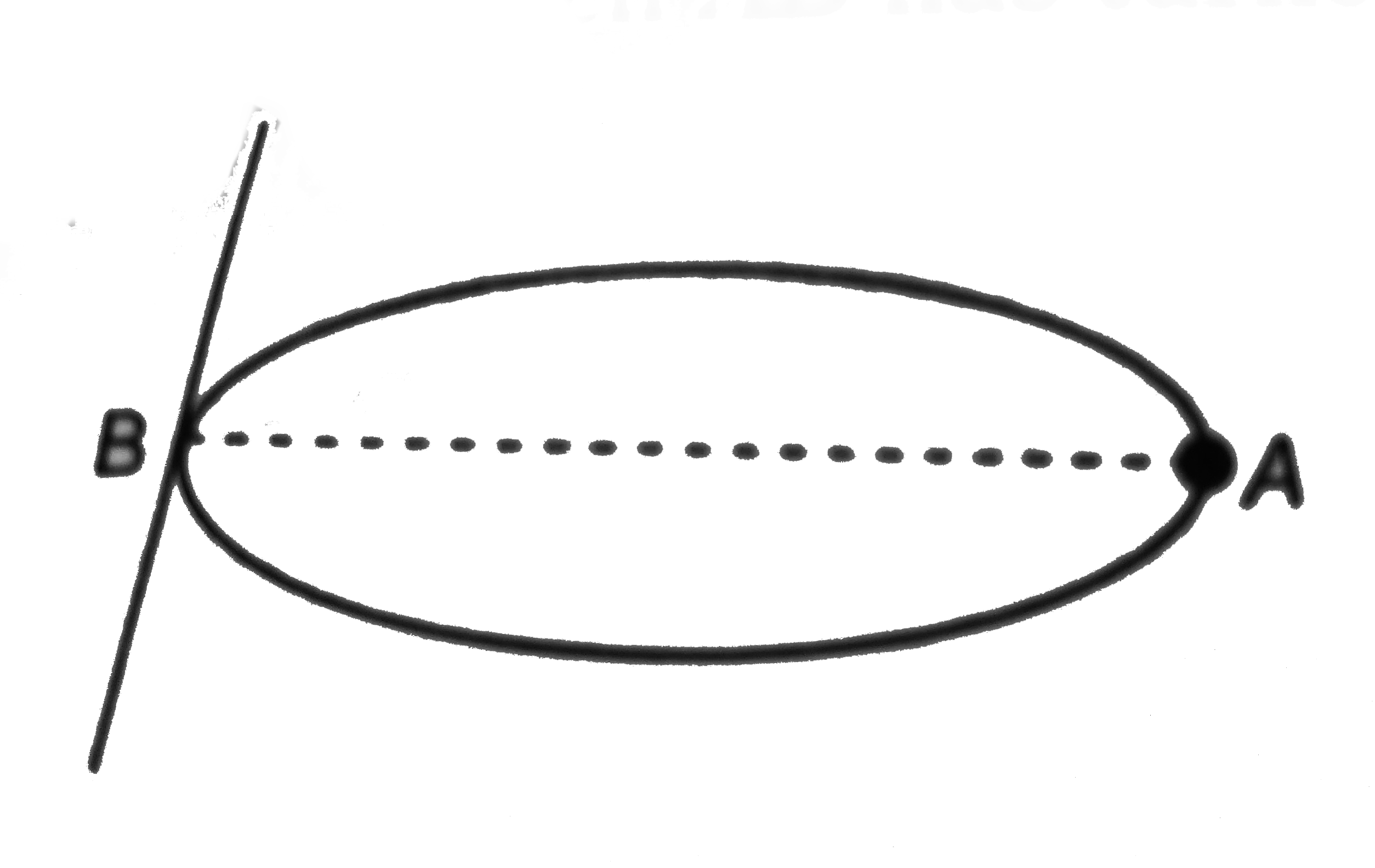
A ring of mass m and radius r has a particle of mass m attached to it at a point A. the ring can rotate about a smooth horizontal axis which is tangential to the ring at a point B diametrically opposite to A. The ring can rotate about a smooth horizontal axis which is tangential to the ring at a point B diametrically opposite to A. The ring is released from rest when AB is horizontal. find the angular veloicity and the angular acceleration of the body when AB has turned through an angle π3.
View SolutionOne end of a light spring of natural length d and spring constant k is fixed on a rigid wall and the other is attached to a smooth ring of mass m which can slide without friction on a vertical rod fixed at a distance d from the wall. Initially the spring makes an angle of 37∘ with the horizontal as shown in fig. When the system is released from rest, find the speed of the ring when the spring becomes horizontal.
[ sin 37∘ = 3/5]
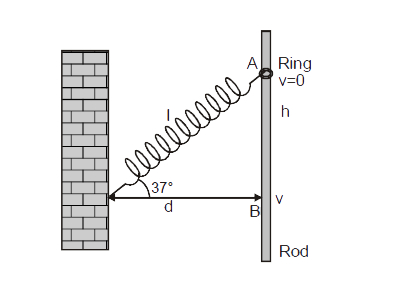
View SolutionA ring of mass m free to slide on a fixed smooth horizontal rod is attached to a particle of mass M kg by a inextensible string of length l. Initially, both M and m are at rest and the string is vertical. A horizontal velocity v0 is imparted to the particle. The maximum height up to which block will rise w.r.t its initial position is (M = 2m)
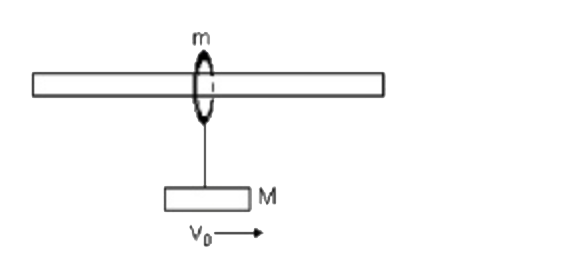
View SolutionThe end of a heavy uniform rod AB can slide along a rough horizontal rod AC to which it is attached by a ring. B and C are joined by a string. If ABC be a right angle, when the rod is on the point of sliding, μ the coefficient of friction and α the angle between AB and the vertical, then
View Solution


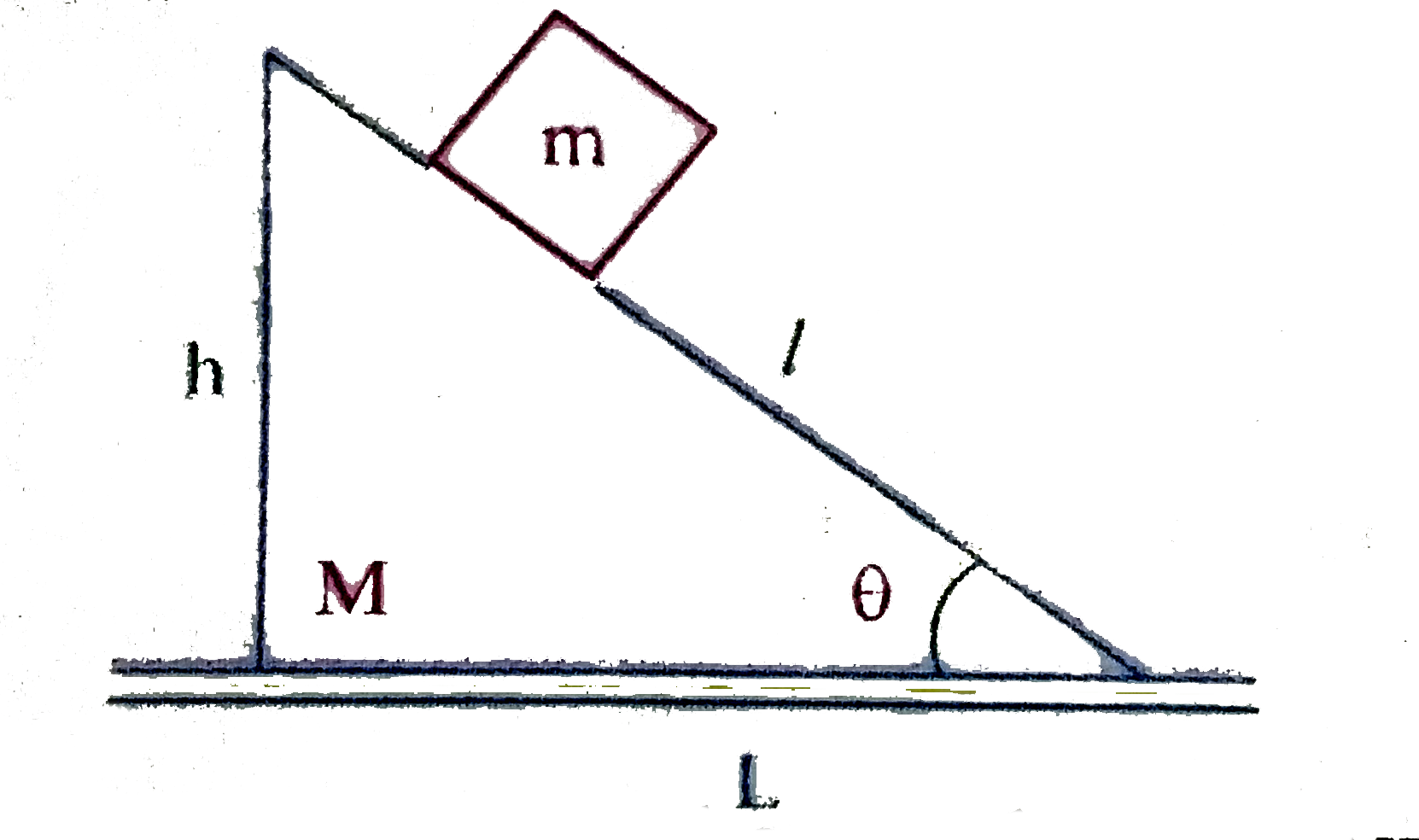 .
.